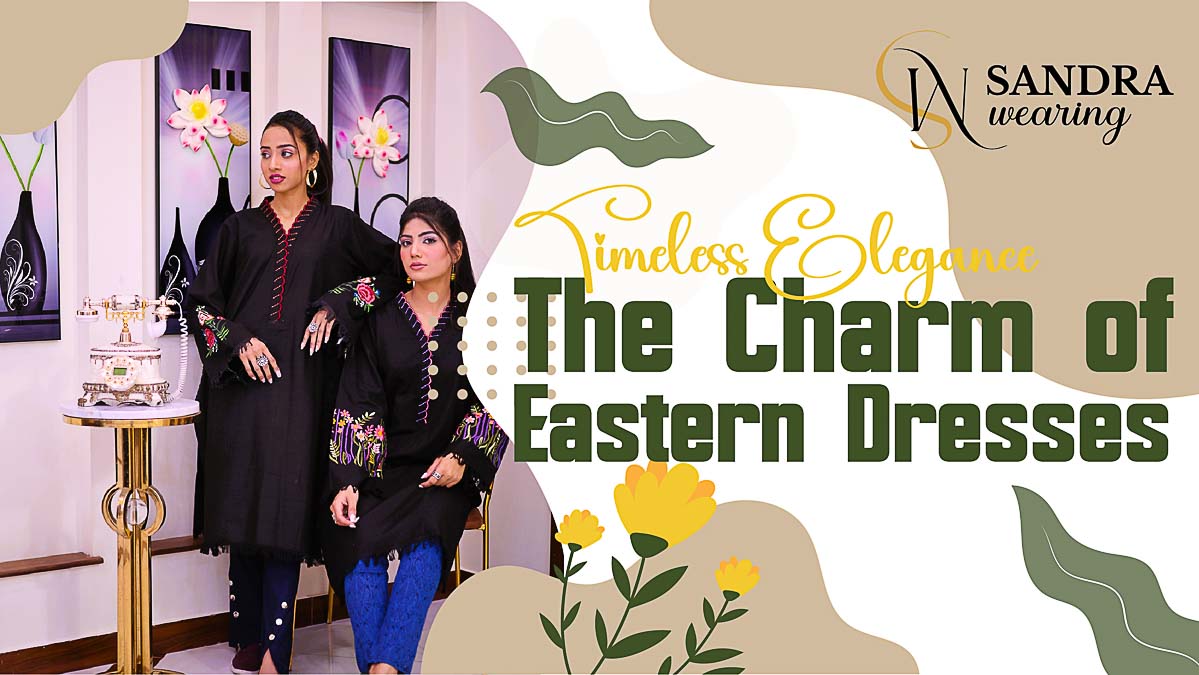In a world where fashion trends come and go, certain styles remain timeless, embodying a grace and charm that transcends eras. Eastern dresses are a prime example of such enduring elegance. From the intricate embroidery to the flowing fabrics, these garments tell stories of culture, tradition, and artistry. This article delves into the captivating world of Eastern dresses, exploring their history, significance, and the reasons behind their lasting appeal.
Historical Roots and Cultural Significance:
Eastern dresses have a rich history that spans centuries and continents. Each region in the East has its own unique style of dress, often influenced by the local culture, climate, and history. For instance, the sari in India, the kimono in Japan, and the qipao in China each have distinct characteristics that reflect the identity and heritage of their respective regions.
Sari: The sari is a traditional Indian garment that dates back over 5,000 years. Made from a single piece of cloth, typically six to nine yards long, it is draped elegantly around the body in various styles. The sari is not just a piece of clothing but a symbol of Indian culture and femininity. The intricate designs and vibrant colors often seen in saris are a testament to the rich textile traditions of India.
Kimono: The kimono is a traditional Japanese garment with a history that can be traced back to the Heian period (794-1185). Made from silk and characterized by its long sleeves and elaborate patterns, the kimono is worn during special occasions and ceremonies. Each kimono tells a story, with its colors, patterns, and motifs often having symbolic meanings. For example, cranes and cherry blossoms are common motifs representing longevity and beauty.
Qipao (Cheongsam): Originating from China, the qipao, also known as cheongsam, became popular in the 1920s. This form-fitting dress is known for its high collar, side slits, and intricate embroidery. The qipao embodies the elegance and sophistication of Chinese fashion, with its design often highlighting the wearer’s figure while maintaining a sense of modesty.
Craftsmanship and Artistry:
One of the defining features of Eastern dresses is the incredible craftsmanship involved in their creation. These garments are often handmade, with artisans spending countless hours perfecting every detail. The use of luxurious fabrics such as silk, brocade, and velvet, combined with techniques like embroidery, beadwork, and weaving, results in pieces that are nothing short of masterpieces.
Embroidery: Embroidery is a common feature in many Eastern dresses, adding a layer of texture and richness to the fabric. In India, for example, zardozi embroidery uses gold and silver threads to create intricate patterns. Similarly, in China, silk embroidery is used to depict beautiful scenes of nature and mythology.
Weaving: Weaving techniques also play a significant role in the creation of Eastern dresses. The handloom weaving tradition in India produces exquisite fabrics such as Banarasi silk and Kanchipuram silk, known for their fine quality and detailed designs. In Japan, the art of weaving kimonos involves meticulous attention to detail, ensuring that each piece is unique and of the highest quality.
Dyeing: Traditional dyeing techniques, such as tie-dye in India and shibori in Japan, add vibrant colors and patterns to the fabrics. These techniques have been passed down through generations, preserving the cultural heritage and ensuring that each garment is a work of art.
Modern Interpretations and Global Influence:
While Eastern dresses are deeply rooted in tradition, they have also evolved to adapt to modern fashion sensibilities. Designers today blend traditional elements with contemporary styles, creating garments that appeal to a global audience. This fusion of old and new has allowed Eastern dresses to maintain their relevance in the ever-changing world of fashion.
Fusion Fashion: Fusion fashion combines the best of Eastern and Western styles, resulting in innovative and versatile clothing. For example, a modern sari might be paired with a crop top or a blazer, creating a chic and contemporary look. Similarly, the qipao has been reimagined with shorter hemlines and modern fabrics, making it suitable for both formal and casual occasions.
Celebrity Endorsement: Eastern dresses have also gained popularity through celebrity endorsements. Hollywood stars and international fashion icons have been seen wearing saris, kimonos, and qipaos on red carpets and at high-profile events. This exposure has helped introduce Eastern dresses to a wider audience, showcasing their beauty and elegance.
Fashion Shows and Designers: Renowned designers like Sabyasachi Mukherjee, Manish Malhotra, and Guo Pei have played a significant role in bringing Eastern dresses to the global stage. Their collections often feature traditional garments with a modern twist, highlighting the timeless elegance of Eastern fashion. Fashion shows in cities like Paris, New York, and Milan now regularly feature Eastern-inspired designs, further cementing their place in the global fashion landscape.
The Symbolism and Emotional Connection:
Beyond their aesthetic appeal, Eastern dresses hold deep symbolic and emotional significance. They are often worn during important life events such as weddings, festivals, and ceremonies, serving as a connection to one’s roots and heritage.
Weddings: In many Eastern cultures, traditional dresses are an integral part of wedding ceremonies. In India, brides often wear red saris or lehengas, symbolizing prosperity and marital bliss. In Japan, brides may wear a white kimono, representing purity, or a colorful uchikake, signifying joy and celebration. These garments are not just outfits but heirlooms that are often passed down through generations, carrying with them the stories and blessings of the past.
Festivals and Ceremonies: Eastern dresses are also worn during festivals and religious ceremonies, reflecting the cultural significance of these occasions. During the Chinese New Year, for example, wearing a red qipao is believed to bring good luck and ward off evil spirits. In India, during Diwali, people dress in their finest traditional attire to celebrate the festival of lights.
Cultural Pride: Wearing traditional Eastern dresses is a way for individuals to express their cultural identity and pride. It serves as a reminder of their heritage and the rich history that they are a part of. In a globalized world, where cultural boundaries are often blurred, these garments help preserve and promote cultural diversity.
Conclusion:
The timeless elegance of Eastern dresses lies in their ability to blend tradition with modernity, craftsmanship with innovation, and cultural significance with global appeal. These garments are more than just pieces of clothing; they are expressions of art, history and identity. As we continue to celebrate and embrace cultural diversity, the charm of Eastern dresses will undoubtedly remain a beacon of elegance and grace, inspiring generations to come.
Whether it is the intricate embroidery of a sari, the flowing sleeves of a kimono, or the sleek lines of a qipao, Eastern dresses capture the essence of timeless beauty. They remind us of the rich tapestry of human culture and the enduring power of tradition in shaping our present and future. In a world that is constantly evolving, the elegance of Eastern dresses stands as a testament to the enduring charm of cultural heritage.
Also Read: Kids Fashion Outfit Ideas for Every Occasion

